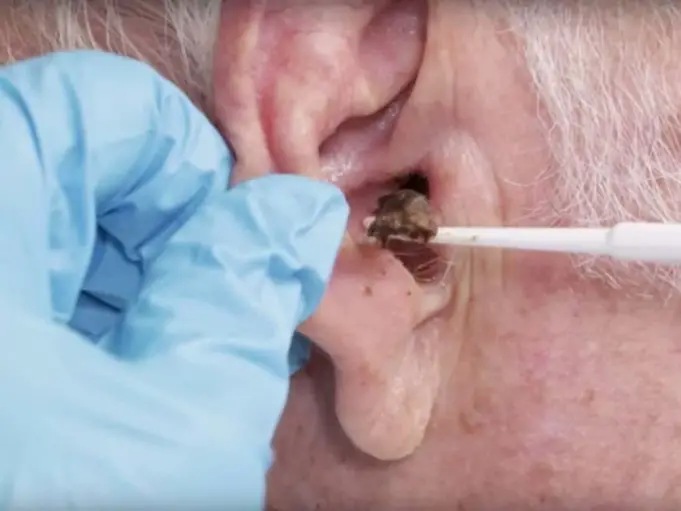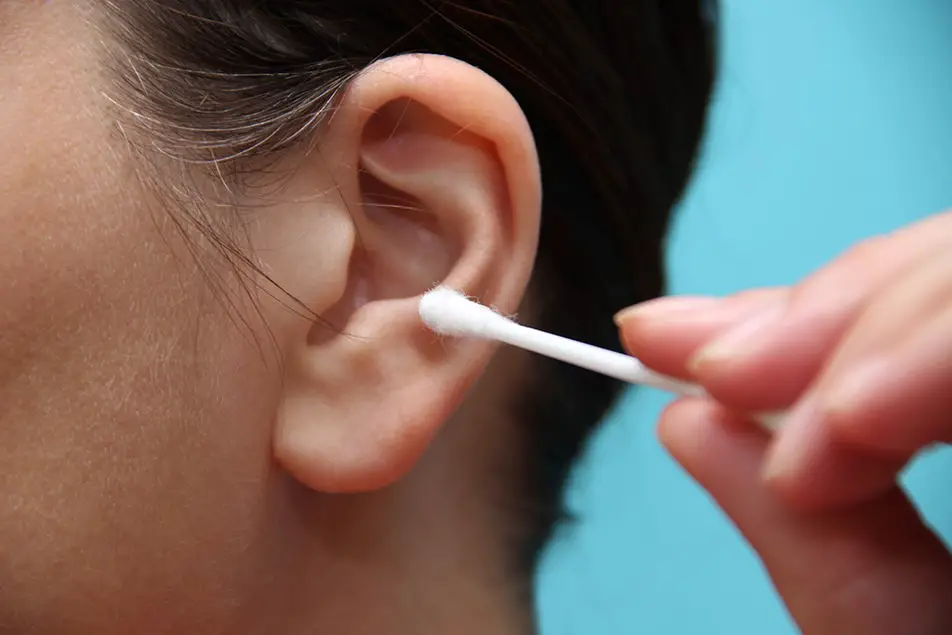Ear wax (Cerumen) as it is commonly referred to, is a natural yellowish, waxy material produced by the ear canal.
The ear wax is produced in the outer part of the ear canal which is the area between the fleshy part of the ear on the outside of your head (the part you can see) and the middle ear.
The ear wax has some important roles it performs in the ear canal. First, it protects and moisturizes the skin of the ear canal, preventing dry and itchy ears.
Secondly, it (the ear wax) has unique chemicals (such as keratin, saturated and unsaturated fatty acids, alcohols and cholesterols) that helps battle infections that could damage the skin inside the ear canal.
Finally, it acts as a shield between the outside world and the eardrum. When particles (dirt, microorganisms etc) enter the ear, the earwax traps and stops these particles from going further into the ear.
Without the ear wax, the ear canal would become dry, soaked and prone to infection.
Normally, the wax gets dry and falls out of the ear along with other trapped dusts or debris, and through motions of chewing and other jaw movements, old ear wax gets moved from the ear canal to the outside of the ear.
The wax reaches the outside of the ear, dries and falls out. Every ear is capable of making ear wax, but the nature and quantity are genetically determined, same way hair colour, height, skin colour etc, are also genetically determined.
The outer part of the ear could be wiped with a clean washcloth as it is not suitable to use a cotton swab, the fingers, Q-tip, match stick or any other thing to poke inside the ear to remove ear wax as such practices may cause damage or bleeding in the ear because the ear canal and the ear drum are both very delicate.
Poking in the ear can also push the wax further into the ear and this could cause a condition known as ear wax impaction.
Ear wax impaction is a condition that occurs when ear wax has been accumulated in the ear canal as a result of certain personal life styles to an extent where there is an irritation or partial of loss of hearing.
Earwax build up or impaction often happens when items like cotton swabs, booby pins, match sticks etc are used to try and clean the ears.
This only pushes the wax further into the ears and can also cause other serious problems like infection, rupturing of the ear drum etc.
Causes of Ear wax Build-up
Excess earwax build-up or blockage can be caused by any of the following;
- The most common cause of ear wax build up is the use of Q-tips and other objects like match sticks, bobby pins and rolled napkin corners which only takes out surface wax, but at the same time pushes the rest of the wax deeper into the ear canal.
- Use of hearing aids and earplugs are another common cause of ear wax build up as these prevent wax from falling out of the ear naturally which leads to its accumulation inside the ear.
- Narrow ear canals or ear canals that are not fully formed.
- Hairy ear canals.
- Constant use of earphones.
Symptoms of Ear Wax Build up
The below symptoms is a possible indication of ear wax build up. It is not a reason to tremble, because if noticed early, it could be properly handled and there would be no major damage.
- Earache (pain in the ear)
- Difficulty in hearing, which may continue to worsen if not properly taken care of.
- Itchiness in the ear.
- Liquid discharge from the ear canal.
- Tinnitus (ringing in the ear).
- Offensive smell from the ear canal.
Treatment
The following methods can be used to clear ear wax build up;
- Soften the Wax: Ear drops help soften or break up the wax. Use an eye dropper to apply a few drops of baby oil, mineral oil, glycerine or hydrogen peroxide in the ear canal.
Here is how to use eardrops:
- Lie down on one side with one ear facing up.
- Carefully and gently release the right amount of drops into the ear canal.
Remain in that position for about five minutes (5 minutes).
- Sit up after five minutes and then blot the outer ear with a tissue to absorb any liquid that comes out.
- Repeat this process for the other ear if the blockage affects both ears.
- Irrigation/Ear Syringing. This is clearing the wax using a stream of warm water into the ear canal. This process should be carried out by a professional medical practitioner. If this method does not get rid of the wax, then softening of the wax with ear drops should continue and then the irrigation method repeated.
N/B: Ear irrigation is not suitable for people who have recently had an ear surgery, frequent ear infection, people who have a perforated ear drum or people with surgically inserted ear tubes.
- Physical removal involves using a small instrument called a suction device. This instrument sucks out ear wax from the ear. This should always be done by a doctor or some other health care professional.
Summary
Cerumen, commonly referred to as earwax is a natural oily substance produced in the ear canal. It is normal for the body to produce ear wax. It also helps lubricate the ears. If there were no ear wax, the ears would probably be itchy and dry.
The earwax has a way of cleaning itself from time to time and as such, it is very risky using bobby pins, match sticks or other objects to try and clean the ear as these may only remove superficial (surface) earwax and push the remaining wax deep into the ear causing an impaction.














